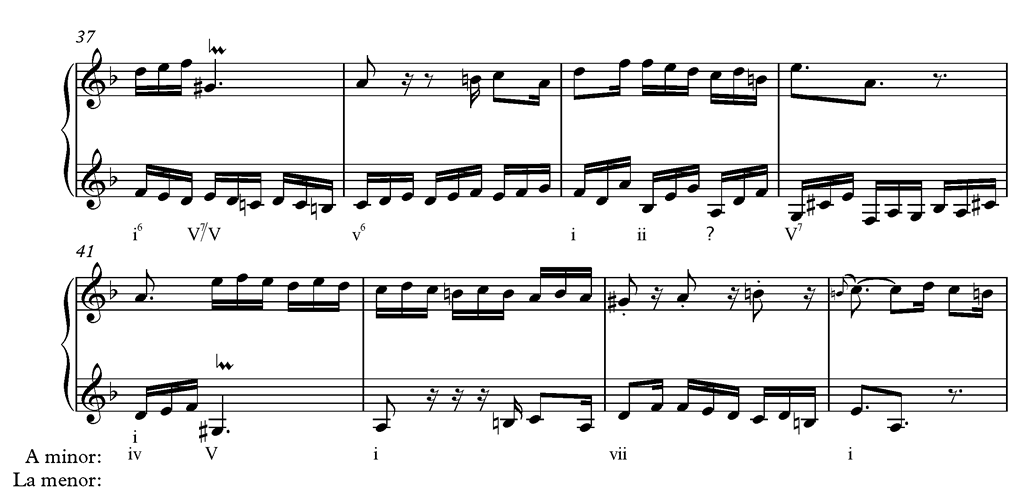Canon alla ottava
José Rodríguez Alvira
Measures 41 to 80
The longest section of this canon begins in measure 41. The subject is transformed by inversion or contrary movement.
Original subject:

Inverted subject:

Measures 37 to 40 are in the key of D minor. The upper voice is imitated by the lower voice in measures 41 to 44 in the key of A minor. Let’s see how Bach manages to harmonize the same melody in both keys:

Remarks:
| Measures | |
|---|---|
| 37 to 40 | The use of rests and long notes in the upper voice of bars 37 to 40 helps Bach to harmonize the passage in both D minor and A minor. |
| 37 and 41 | The G# of the second and third beat of measure 37 becomes the third of the dominant chord of A minor in measure 41. |
| 38 and 42 | The minor v degree of D minor in measure 38 becomes the A minor tonic in measure 42. |
| 39 and 43 | The D and F in the first beat of measures 39 and 43 are harmonized with the D minor tonic chord in measure 39 and with the A minor vii degree of in measure 43. The harmonic ambiguity of the third beat of measure 39 is needed to maintain the A minor key in measure 43. |
| 40 and 44 | By using the A and E notes only in the upper voice in measure 40, Bach is able use the D minor dominant in measure 40 (with C#) and the A minor tonic chord in measure 44 (with C natural). |
It is amazing how Bach manages to overcome harmonic obstacles with effective melodic solutions!
Bach returns to D minor in measure 61 and repeats the original canon. Measures 41 to 80: